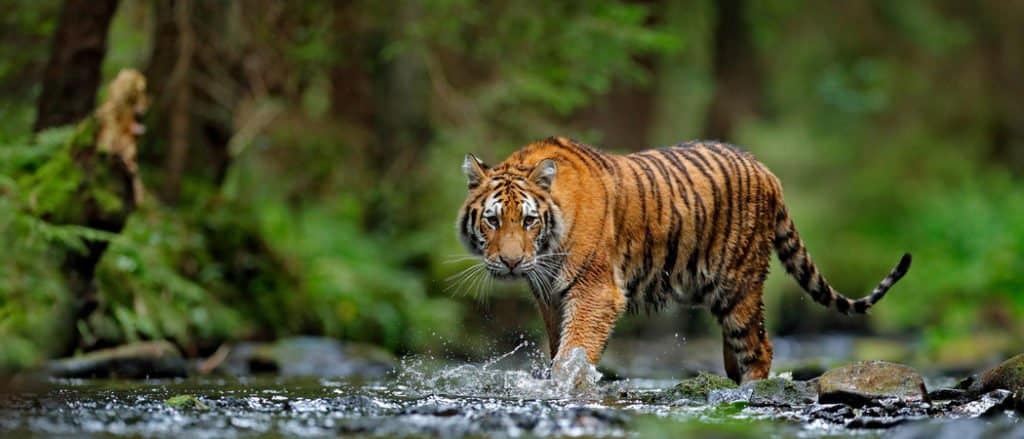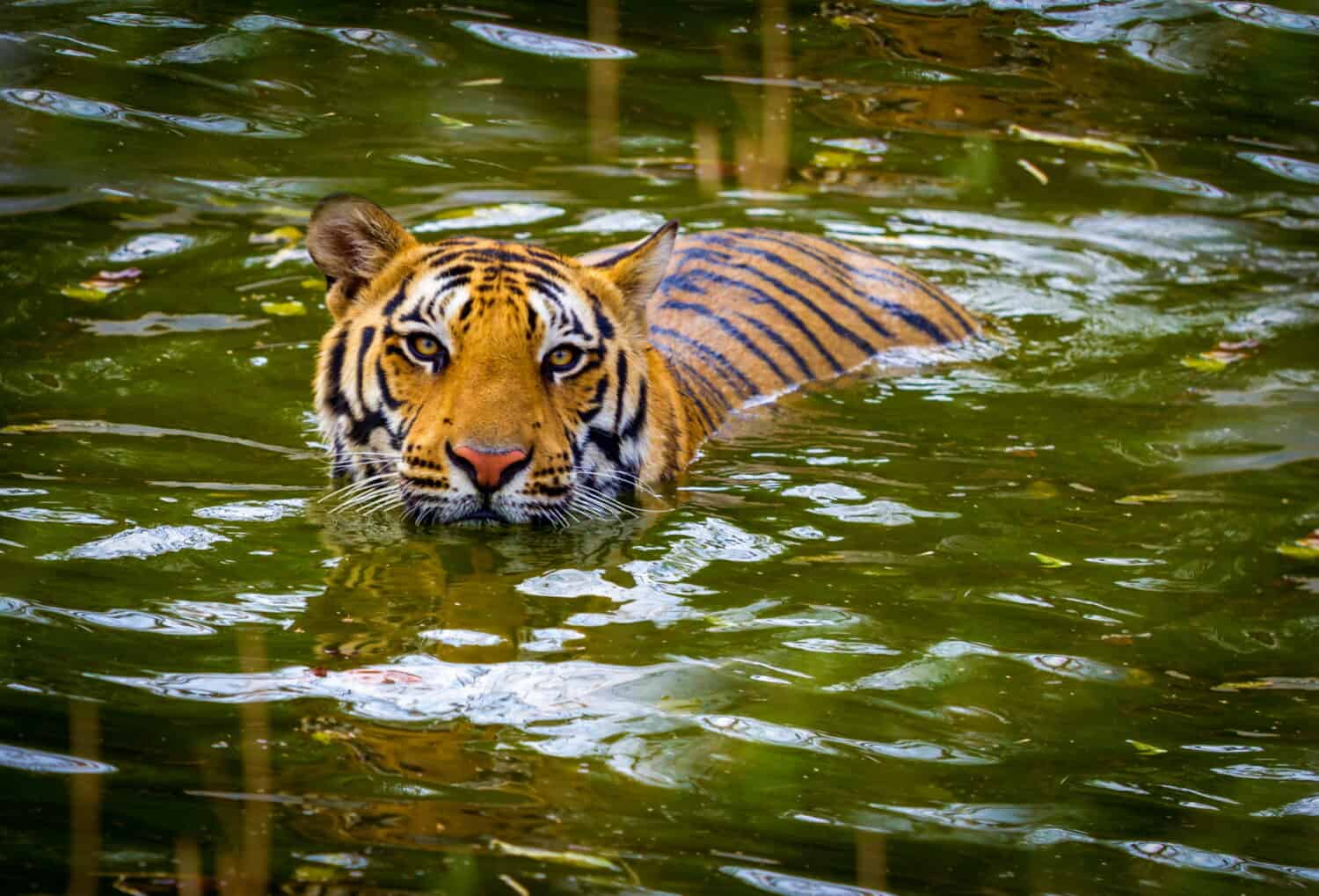The Times of India had an interesting story: people spotted a tiger (Panthera tigris) in the Brahmaputra river. The beast caught a current and reportedly swam for over fifty miles (80 km) until it reached land at a place called Peacock Island. Yes, tigers can swim!
A wildlife official said the Royal Bengal tiger probably was drinking from river and got swept away from Orang Wildlife Sanctuary in the eastern region of Arram. Even with the help of a moving river, this tiger went hours swimming through the water before it could be safely returned to the reserve.
A combination of physical and environmental features gives tigers strong swimming abilities. Cardiovascular and overall physical strength, plus long hind legs, give them a particular advantage. Tigers swim to catch prey or cool off, and only top Olympic athletes can go faster. Tigers will routinely swim across miles of open river.
1. Tigers Can Swim for Miles at a Time

The tiger, pictured here, is rugged and capable both on land and in the water.
©iStock.com/Ondrej Prosicky
This tiger in eastern India swam for hours. On a map, the tiger’s stop at Peacock Island is a straight shot along the Brahmaputra River, around 50 miles (80.5 km) southwest of Orang National Park. This is a very long swim, even for the largest of the big cats. But tigers will routinely cross rivers of several miles. They are very capable swimmers.
2. Only Michael Phelps and Maybe a Few Others Could Escape Tigers by Swimming
According to LiveStrong.com, the top speed for a human swimmer is five to six miles per hour. The animals are slower than humans for a lengthy dog, but a tiger can reach four miles per hour in the water.
3. Tigers Can Swim, but They Also Have To

Whether in a zoo, like this tiger, or in the wilds, tigers run hot and need to swim to cool off.
©Kathleen Struckle/Shutterstock.com
Tigers will get into the water as a matter of necessity.
The coldest place to find a tiger in present times is parts of Far East Russia and northeastern China. However, most tigers’ present range is in hotter jungle climates throughout India and southeast Asia. With thick fur and an average body temp of 101.3 F (42.7 C), tigers swim out of necessity to cool off.
Further, their primarily carnivorous diet of fatty proteins like deer, boar, and other large game creates a metabolic furnace, which makes cooling down all the more important. To catch those animals, tigers have been known to chase prey towards the water and then capture their food in the watery fracas.
4. Why Tabbies Hate Getting Wet, but Tigers Can Swim Happily
There’s an odd difference between big cats and house cats when it comes to water. We know most domestic felines hate getting wet. Cats can swim, and tigers can swim, too, but tigers appear to be quite comfortable with it. So why would tigers be just fine with it?
Veterinarians remind us that the primal cat of ancient days—from whom we get all felines from tabbies to tigers—evolved in the dry desert. That ingrained aversion to getting wet goes deep. But the will to survive goes deeper. House cats will be fine in a house that’s 60 to 70 F, but tigers physically need to swim to cool off. Tabbies don’t need to chase their meals into the water, but tigers do.
5. Tigers Legs Give them Some Oomph in the Water
Tigers are the largest cats on earth—with lions not far behind. These wild cats are massive and have correspondingly muscular bodies. Tigers are less than 8% body fat! That musculature is a big advantage in paddling through the river.
Another advantage showing that tigers can swim is their long hind legs. We’ve all seen cats hop up onto a china hutch from a dead standstill. With the help of those beefy back legs, tigers are able to jump over 30 feet, meaning those same muscular legs add to their swimming speed.
6. Tigers Can Swim Better with Their Powerful Cardiovascular System
The heart ventricles, or lower chambers that push blood back into the body, are larger in tigers than the atrium chambers. Blood is shoved to the body and lungs with great force, meaning this cat’s supercharged breathing is a boon for the high-aerobic workout of swimming.
7. Tigers Can Swim because They Get Help from Their Paws

The tiger’s massive paws, here gripping a deflated soccer ball, have webbing between the digits which acts like a canoe paddle when they swim.
Tigers can swim with the added benefit of webbed paws, which create greater propulsive force in the water, like the flat blade of a paddle.
Swimming for Need, with Speed
From chasing and hunting prey to spending a good part of the day lounging in the water, these magnificent animals are excellent swimmers. Ranging from the far northeast of the Asian continental landmass down to Indonesia, tigers certainly have already made their way across a lot of water in their specie’s history.
Thank you for reading! Have some feedback for us? Contact the AZ Animals editorial team.








